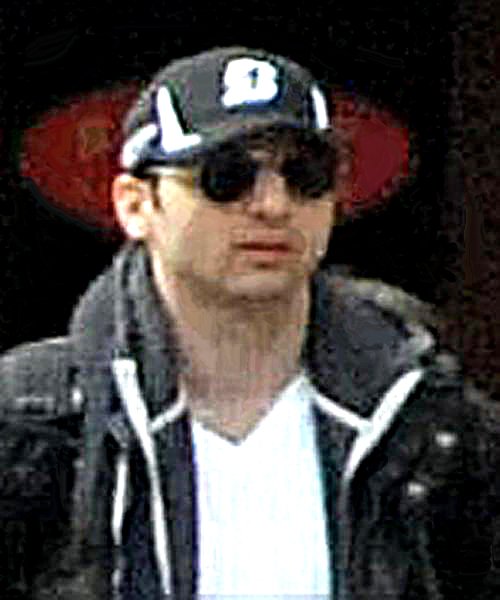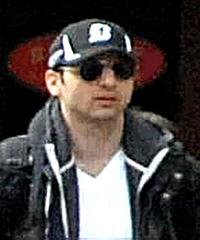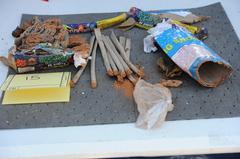
Complete Guide to Visiting the Boston Marathon Bombing Memorials in Boston
Date: 14/06/2025
Introduction
The Boston Marathon Bombing Memorials are powerful tributes to the victims, survivors, and first responders of the April 15, 2013 tragedy. Located near the iconic marathon finish line on Boylston Street in Boston’s Back Bay, these memorials offer visitors a space for reflection, remembrance, and a celebration of the city’s unity and resilience. With their elegant granite markers, illuminated bronze and glass spires, cherry trees, and inscribed poetry, the memorials stand as lasting symbols of hope and Boston Strong. This comprehensive guide will help you understand the history, significance, and practicalities of visiting these poignant landmarks, whether you are a history buff, a marathon enthusiast, or a first-time visitor to Boston.
For further information, consult the Boston Athletic Association and explore the Our Marathon Archive for in-depth historical context.
Contents
- Introduction
- About the Boston Marathon Bombing Memorials
- History and Cultural Significance
- Location and How to Get There
- Visiting Hours and Accessibility
- Tickets and Admission
- Guided Tours and Special Events
- Visitor Experience
- Photographic Spots and Nearby Attractions
- Marathon Weekend Tips
- Impact of the 2013 Bombings
- Security and Event Management Post-2013
- Practical Visitor Information
- Frequently Asked Questions (FAQ)
- Visuals and Interactive Resources
- Conclusion
About the Boston Marathon Bombing Memorials
The memorials honor the lives of Martin Richard, Krystle Campbell, Lu Lingzi, MIT Police Officer Sean Collier, and Boston Police Officer Dennis Simmonds. The thoughtfully designed sites include granite pillars, illuminated bronze and glass spires, and blooming cherry trees. Poetry and inscriptions etched into the memorial elements underscore a message of hope and remembrance, while the setting in the vibrant Back Bay neighborhood connects the memorials to Boston’s daily life.
Learn more about Boston’s public art.
History and Cultural Significance
On Patriots’ Day, April 15, 2013, two bombs detonated near the marathon finish line, resulting in loss, injury, and a profound impact on Boston and the world. The memorials, located near the intersections of Boylston Street with Exeter and Fairfield Streets, commemorate the victims and the collective strength of the community. Their design—granite pillars, bronze and glass spires, and cherry trees—reflects both mourning and the city’s enduring resilience.
For more on the history and community response, visit the Our Marathon Archive.
Location and How to Get There
Address: Boylston Street, near Copley Square, Boston, MA 02116
The memorials are located at the sites of the 2013 bombings, steps from the Boston Marathon finish line and Copley Square.
Public Transportation
- MBTA Green Line: Copley Station is closest, but may be closed on marathon day.
- Alternative Stations: Arlington and Hynes Convention Center.
- Buses: Several routes serve the Back Bay area.
Due to limited parking and frequent street closures—especially during marathon events—public transit is strongly recommended.
Visiting Hours and Accessibility
- Hours: The memorials are outdoors and accessible 24/7, all year.
- Admission: Free, no tickets required.
- Accessibility: Wheelchair-accessible paths and nearby accessible MBTA stations. Benches and paved walkways ensure a comfortable visit.
Guided Tours and Special Events
- Guided Tours: Offered by groups such as Boston By Foot, which often includes the memorials in broader historic tours.
- Annual Commemorations: Each April, “One Boston Day” marks the anniversary with ceremonies and acts of community kindness at the memorials.
Visitor Experience
What to Expect
- Quiet, contemplative spaces with benches and shaded areas.
- Informational plaques and poetry inscriptions.
- Respectful opportunities to leave tributes.
Special Features
- Illuminated Spires: The bronze and glass spires are especially striking at night.
- Cherry Blossoms: The cherry trees bloom in April, adding emotional resonance during marathon season.
Photographic Spots and Nearby Attractions
- Boston Public Library: Next to Copley Square, renowned for its architecture and exhibitions.
- Old South Church: Historic landmark adjacent to the finish line.
- Marathon Finish Line: Painted on Boylston Street, an iconic photo location.
- Copley Square: Lively urban park surrounded by shops and cafes.
The memorials and surrounding cherry trees make for memorable photographs, especially during spring or at sunset.
Marathon Weekend Tips
- Plan Ahead: Hotels and transit fill up quickly; book well in advance.
- Public Transit: The MBTA is the best choice; expect some station closures and large crowds.
- Prepare for Weather: Boston spring weather can be unpredictable; dress in layers.
- Commemorative Activities: Participate in One Boston Day events and look for marathon-themed displays along the route.
Impact of the 2013 Bombings
The 2013 Boston Marathon bombing had a deep and lasting effect on the city and the world. In the immediate aftermath, thousands of spontaneous tributes appeared at the bombing sites and in Copley Square. Many of these items are now preserved in digital archives, such as the Our Marathon Archive, ensuring the memory and community response are not forgotten.
Participation in the marathon quickly rebounded in the years following, symbolizing Boston’s resilience. Today, the event continues to draw tens of thousands of runners and hundreds of thousands of spectators (Trolley Tours).
Security and Event Management Post-2013
Security measures have been significantly enhanced since 2013. These include increased police presence, surveillance, bag checks, and restricted vehicle access during major events. The annual “One Boston Day” fosters a spirit of unity and service, reinforcing the memorial’s role in community healing (FBI).
Practical Visitor Information
- Best Times: Early morning or late afternoon for fewer crowds and best lighting.
- Etiquette: Maintain a respectful demeanor; keep noise to a minimum.
- Weather: The memorials are outdoors—check the forecast and dress accordingly.
- Accessibility: Wheelchair-friendly paths, ramps, and nearby accessible facilities.
- Guided Tours: Check with local operators or Boston By Foot for current offerings.
Frequently Asked Questions (FAQ)
Q: Is there an admission fee?
A: No, the memorials are free and open to the public at all times.
Q: Are the memorials wheelchair accessible?
A: Yes, with paved paths and accessible nearby transit.
Q: Can I visit the memorials on marathon day?
A: Portions of Boylston Street may be closed; check MBTA and official marathon updates for details.
Q: Are guided tours available?
A: Yes, several local companies offer walking tours that include the memorials.
Q: Where can I learn more about spontaneous memorials and the community response?
A: Visit the digital Our Marathon Archive.
Visuals and Interactive Resources
Interactive maps, high-quality images, and virtual tours are available through the Boston Marathon official website, Boston tourism, and city resources. Descriptive alt text is included for accessibility and search engine optimization.
Conclusion
Visiting the Boston Marathon Bombing Memorials is a deeply meaningful experience—a chance to honor those affected by tragedy and witness Boston’s enduring spirit. With year-round, free access, thoughtful design, and proximity to historic sites, the memorials are essential stops for any Boston visitor. Combine your visit with explorations of nearby landmarks, attend commemorative events, and consult digital resources to enrich your understanding.
For the latest updates, travel tips, and guided experiences, download the Audiala app and follow us on social media. Engage with the Boston community—share your visit with #BostonStrong and #OneBostonDay.
Sources and Further Reading
- Boston Public Art – Boston Marathon Bombing Memorials
- Our Marathon Archive
- Boston Marathon Bombings Memorials Visiting Guide
- Boston Marathon Visitor Guide 2024
- Boston Marathon Bombing Memorial Official Info
- Boston Public Library – Boston Marathon Guide
- Boston Athletic Association Accessibility Info
- Boston Tourism Official Site
- Northeastern University Digital Archive


































































































































